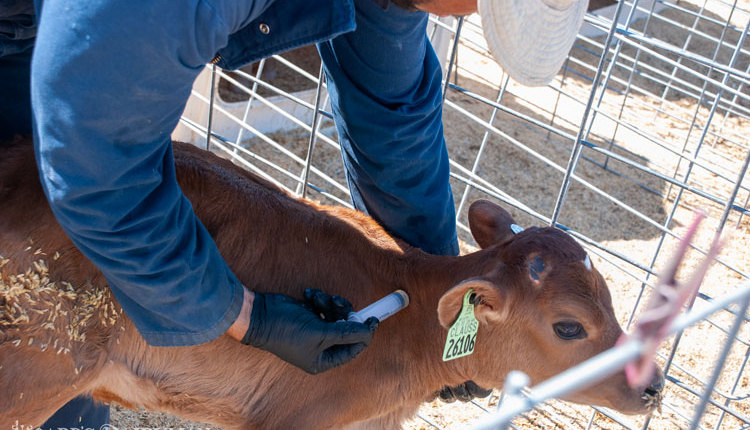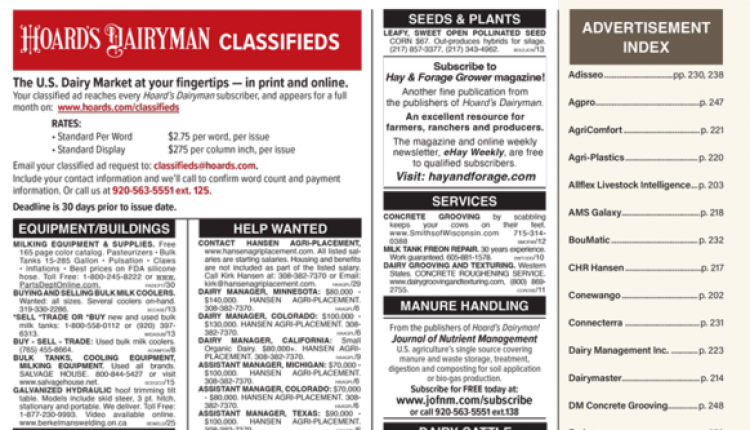
suggested Representative Collin Peterson (D-Minn.) when discussing the future of the Margin Protection Program for Dairy.
“You should never write a farm bill or develop a new program when you have high prices. It just causes problems,” reflected the candid Minnesota Congressman first elected to the House of Representatives in 1991.
“At the time we developed MPP-Dairy, we had the highest feed costs we had ever experienced. That being the case, we were concerned that the $6.50 coverage level and margin above feed costs was too good. By too good, we were concerned that there would be too much insulation from the marketplace,” he told attendees at the 100th anniversary celebration of the National Milk Producers Federation on June 7 in Washington, D.C.
“With too much insulation, we could have too much production and no good way to control it without the market stabilization component,” said Peterson, recalling the big fight over market stabilization with then House Speaker John Boehner (R-Ohio). “As it turned out, we didn’t have to worry about that overproduction because we didn’t have the type of MPP-Dairy sign-up that we expected,” said the Ranking Member of the House Ag Committee, noting that other market factors have led to a buildup in world dairy product inventory.
Buy-up coverage fallsAs for MPP-Dairy, 2016’s buy-up coverage above the base $4 level nose dived from the 2015 pace. Last year some $67 million in premiums were collected by USDA’s Farm Service Agency (FSA) as farmers insured at margins from $4.50 to $8. This year, a mere 10 percent of that number paid in premiums totaling $6.5 million, according to USDA records. In fact, only 5,315 farms of the 23,328 signed up for MPP-Dairy bought coverage beyond the $4 level.
“When I asked producers in my district why they didn’t sign up, the routine response was, ‘If we aren’t going to get any money out of the program, why should we participate?’” explained Peterson.
“Of course, that response took place as many producers compared last fall’s prevailing production costs with the late-November 2015 futures market when sign-ups for 2016 were due to FSA offices,” said the Congressman from Minnesota’s seventh district.
“Then there is the matter that many producers still view the MPP-Dairy as a Milk Income Loss Contract (MILC) program . . . unless they are going to get money, they don’t want anything to do with it,” Peterson surmised.
“I think these perspectives will change this fall as dairy margins continue to erode and producers consider sign-ups for 2017. This fall’s economic conditions will make believers out of MPP-Dairy. With some of the highest cheese inventories we’ve had in some time, milk prices likely will not rebound anytime soon,” he said. He pointed out that the March-April margins were at $7.15 and that number could fall further in May-June’s bimonthly MPP-Dairy window.
As for next year, at least dairy farmers can still opt in for coverage.
“One of the good things we did for MPP-Dairy was to make dairy farmers sign up every year,” said Peterson about positive decisions made in the new program. “If those sluggish prices remain throughout the summer, sign-up rates for MPP-Dairy could pick up for 2017,” he reiterated.
Feed costs misaligned“A few weeks back, we had a congressional hearing about MPP-Dairy,” Peterson shared with the audience. “We admitted the program needs some changes. One of the issues is feed cost,” said the House Representative.
“At the time we wrote the bill, California dairy producers wanted their own feed costs. The same held true in Vermont and Maine. I resisted getting into a regional fight over feed costs because I didn’t think that was a good thing for the future of the industry. It isn’t a pathway forward,” said the Democrat. “I still hold firm to that notion.
“After reviewing MPP-Dairy feed costs since the passage of the farm bill, I think the issue has more to do with dairy farmers who buy feed when compared to those who grow their own feed. So, we will be looking at the entire feed cost structure moving forward,” he said.
Peterson went on to discuss if the proper USDA agency is even administering the program.
“We will be looking at whether we should consider turning MPP-Dairy over to USDA’s Risk Management Agency (RMA) and have the equivalent of a crop insurance program instead of having USDA’s Farm Service Agency handling it.
“At the time of the farm bill’s creation, I didn’t want to get into an argument on how much the insurance companies were making on the program and other related matters that may stall this program’s passage. The overarching theme for many involved with developing MPP-Dairy was ensuring USDA had a handle of what was going on,” said MPP-Dairy’s major architect.
“As it turns out, that wasn’t a good approach . . . having FSA administer the program. Dairy farmers were saying, ‘We are paying in all this money and we are not getting anything back,’” he said in reference to some $74 million in premiums and fees collected to just over $1 million paid out to date. Those payouts could change drastically as milk check income falls and feed prices creep upward. However, they would likely only be available at the higher $4 to $8 coverage levels.
A pathway forward“We haven’t decided what we are going to do. The other day RMA staffers were in our office to talk more about MPP-Dairy and aligning the program closer to crop insurance,” said Peterson.
Among other potential tweaks, moving the MPP-Dairy from a bimonthly to monthly payment structure and changing premiums to be more cost-effective for smaller dairy farmers could be on the docket.
The latter is a clear indication that larger-than-average dairy farms signed up for the program. First, 23,328 dairy farms signed up for MPP-Dairy. That represents 53.5 percent of the nation’s 43,500 dairy farms with permits to sell milk. However, farms that signed up for MPP-Dairy coverage definitely trend larger since those operations represent 77.8 percent or 162.3 billion pounds of the nation’s total milk flow.
“The long and the short of the entire MPP-Dairy situation . . . between now and the 2018 Farm Bill, we will try to get as much of this nailed down as we can in terms of facts so we are ready to go with an improved program,” said the Congressman steeped in dairy knowledge.










